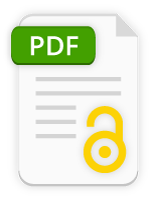Intake of Table Sugar and Their Corresponding Food Sources in Adults from the 2017–2018 Brazilian National Dietary Survey
 ,
Paula Victória Félix
,
Paula Victória Félix  ,
Carlos Alberto Nogueira-De-Almeida
,
Carlos Alberto Nogueira-De-Almeida  ,
Mauro Fisberg
,
Mauro Fisberg 

Full text: Download
Abstract
Excessive intake of free sugars is associated with adverse health outcomes. Table sugar is one of the main dietary sources of free sugars; however, the amount added by Brazilian consumers in their culinary preparations is unknown. The aims were to estimate the daily intake of table sugar (g/day), its contribution to total energy intake (E%) and the main food groups that contribute to the intake of this sugar in a nationwide multi-ethnic sample of Brazilian adults (2017–2018 Brazilian National Dietary Survey). Based on two 24-h recalls adjusted for the within-person variation, the overall median table sugar intake was 14.3 g/day, corresponding to 3.2 E%. Males, individuals living in rural areas, with low income, low education and experiencing food insecurity had a higher intake of table sugar. The main food sources of table sugar were coffee (55.8%), juice (33.9%), milk-based preparations and smoothies (3.1%), powdered and processed juice (2.7%), whole milk (1.9%), and tea (1.6%). There are no recommendations regarding the limit of table sugar intake, but considering that the WHO limits the intake of free sugars to <10 E%, it is concluded that table sugar intake by Brazilians corresponds to about 30% of the upper recommended daily intake of free sugars.

